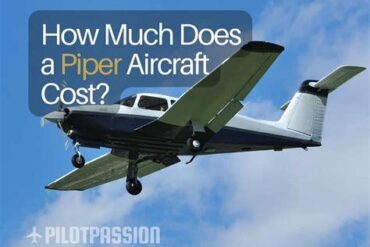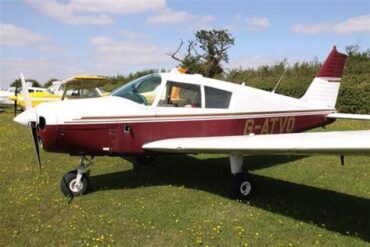The Piper Super Cub is a revered aircraft in the aviation community, known for its rugged versatility, exceptional performance in short-field operations, and timeless design. As we explore the price and operating costs of the Piper Super Cub, we will provide a comprehensive overview that will guide potential buyers and operators in understanding the financial commitments associated with owning and operating this iconic aircraft.
Overview of the Piper Super Cub
The Piper Super Cub was first introduced in the late 1940s and has since earned a legendary status among light aircraft. It is characterized by its high-wing design, robust landing gear, and remarkable ability to operate from challenging airstrips. Available in various configurations, including tailwheel and tricycle gear, the Super Cub has become a favorite among bush pilots, flight schools, and recreational flyers alike.
Market Price of the Piper Super Cub
When considering the purchase price of a Piper Super Cub, several factors come into play, including the aircraft’s condition, age, modifications, and market demand. On average, buyers can expect to pay between $25,000 and $100,000 for a used model, with prices for newer or well-maintained aircraft often exceeding $100,000.
Factors Influencing Price
-
Age and Condition: Older models typically cost less, but their condition is crucial. A well-maintained aircraft can command a higher price.
-
Modifications: Many Super Cubs are customized with performance enhancements, modern avionics, and improved interiors, which can significantly impact the price.
-
Total Time and Maintenance History: An aircraft with low total flight hours and a documented maintenance history will generally be more valuable.
-
Location: Prices can vary based on geographic demand and local market conditions.
Comparative Market Analysis
| Model Year | Average Price | Typical Modifications | Remarks |
|---|---|---|---|
| 1949-1960 | $25,000 – $50,000 | Basic avionics, standard paint | Often requires refurbishment |
| 1961-1975 | $50,000 – $75,000 | Upgraded avionics, extended range | More desirable for serious flyers |
| 1976-1985 | $75,000 – $100,000 | STOL modifications, modern engine | Premium price for well-kept aircraft |
| 1986-Present | $100,000+ | Advanced avionics, new engines | High demand, excellent resale value |
Operating Costs of the Piper Super Cub
Once the initial purchase price is settled, potential owners must consider the operating costs associated with the Piper Super Cub. These costs can vary significantly based on flying frequency, maintenance habits, and fuel efficiency. We will break down the major components of operating costs.
1. Fuel Costs
The Piper Super Cub is known for its fuel efficiency, making it a cost-effective choice for recreational flying and bush operations. The aircraft typically consumes around 10 to 15 gallons per hour (GPH) depending on the engine and flying conditions. With an average fuel price of $5 per gallon, the estimated fuel costs can range from $50 to $75 per hour. This translates to approximately $2,500 to $3,750 for 50 hours of flight annually.
2. Maintenance Costs
Maintaining a Piper Super Cub is vital for ensuring safety and performance. Routine maintenance, including inspections and repairs, typically costs around $1,000 to $2,000 annually. Here’s a breakdown of potential maintenance expenses:
-
Annual Inspection: $1,200 – $2,500
-
Engine Overhaul: $20,000 – $30,000 (after 1,500 hours)
-
Parts and Labor: $500 – $1,500 per year
-
Unexpected Repairs: Variable, budget for at least $500 yearly
3. Insurance Costs
Insurance is another critical component of operating costs. The cost of insurance for a Piper Super Cub typically ranges from $800 to $1,500 per year, depending on factors like pilot experience, coverage limits, and the aircraft’s value. Higher coverage may be required for commercial use, which can increase premiums significantly.
4. Hangar and Storage Fees
Where you keep your Super Cub will also impact costs. Hangar fees can vary dramatically by location, with prices ranging from $100 to $500 per month. On an annual basis, this could total between $1,200 and $6,000. If a hangar isn’t feasible, consider costs for outdoor tie-downs, which may be cheaper but offer less protection from the elements.
5. Pilot Costs
If you’re not flying the Super Cub yourself, hiring a qualified pilot will incur additional costs. Flight training for the Super Cub typically ranges from $150 to $300 per hour, and hiring a pilot can add considerable expense, especially for charter operations.
Total Annual Operating Costs
To give a clearer picture of the overall costs associated with owning a Piper Super Cub, let’s summarize potential annual operating costs based on the aforementioned components:
| Cost Component | Estimated Annual Cost |
|---|---|
| Fuel (50 hours) | $2,500 – $3,750 |
| Maintenance | $1,500 – $4,000 |
| Insurance | $800 – $1,500 |
| Hangar/Storage | $1,200 – $6,000 |
| Pilot Costs (if applicable) | $7,500 – $15,000 |
| Total | $13,500 – $30,250 |
Resale Value and Depreciation
Understanding resale value and depreciation is crucial for prospective buyers. The Piper Super Cub generally holds its value well due to high demand, especially for well-maintained models. While most aircraft depreciate in value, Super Cubs have shown resilience in the market, often retaining 60-80% of their original value after 10 years, depending on usage and maintenance history.
Factors Affecting Resale Value
-
Condition and Upgrades: A well-kept aircraft with modern upgrades will command a higher resale price.
-
Market Demand: Seasonal fluctuations and changes in the aviation market can affect prices.
-
Historical Significance: Rare models or those with significant history may fetch a premium.
Conclusion
Owning a Piper Super Cub offers an exceptional flying experience, combining versatility and performance with a relatively reasonable cost structure compared to other light aircraft. With initial purchase prices varying widely and operating costs manageable for most enthusiasts, the Super Cub remains a top choice for aviators seeking adventure and utility.
As with any significant investment, potential buyers should thoroughly assess their flying needs and budget to ensure they make an informed decision. With proper care, the Piper Super Cub can serve as a reliable companion for years to come, providing memorable flights and adventures in the skies.


















